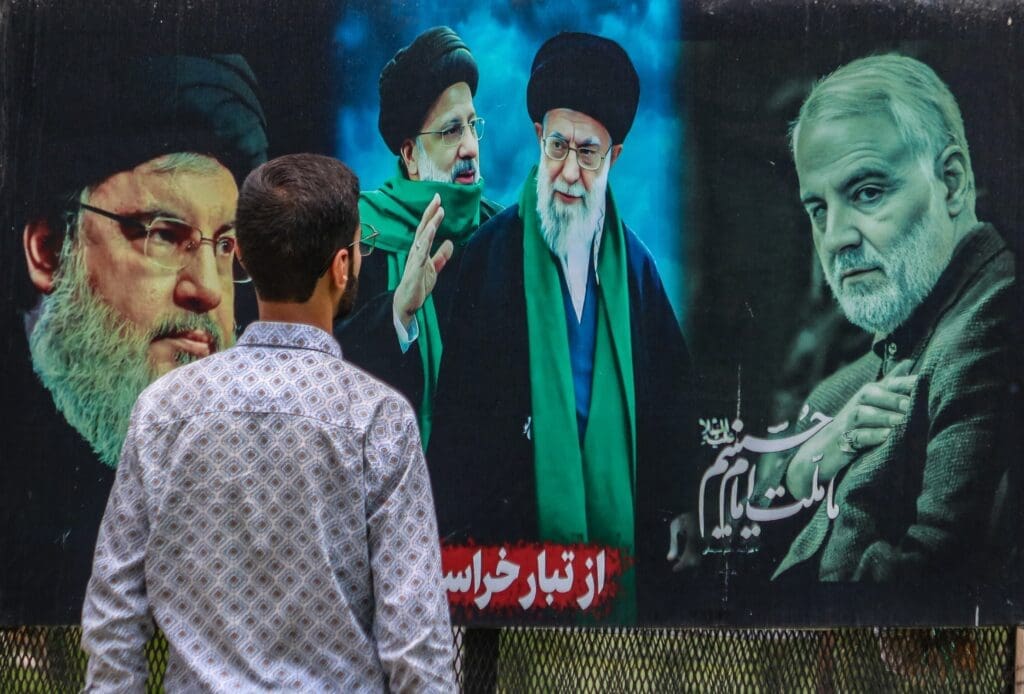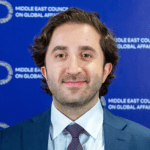Israel’s decision to launch airstrikes on Iran’s nuclear facilities and military should have come as no surprise following a year of devastating setbacks for the Iranian regime and its proxy network in the region. For almost a decade, the two sides have engaged in a shadow war and tit-for-tat military exchanges across several conflict theaters. But that shadow war and the previous rules that constrained their conflict were upended after Iran launched a barrage of drones and missiles against Israel in April 2024, following Israel’s strike on Iran’s embassy in Syria.
The conflict intensified further after Israel assassinated Hezbollah leader Hassan Nasrallah and degraded the rest of the organization in a decapitation campaign. Hezbollah was Iran’s vanguard in the region—its regional equivalent of a praetorian guard—and its demolition has strengthened Israel’s ability to confront the Islamic Republic on its own terms, even without direct U.S. involvement in its current military campaign.
The Iranian regime is guilty of overreach and hubris, and it finds its very existence under threat. Within a matter of days, Israel has wiped out the upper echelons of the Islamic Revolutionary Guard Corps (IRGC), in tandem with strikes on Iran’s nuclear facilities, missile defense systems and weapons production sites. This is a far cry from the pre-October 7 era that was shaped by the 2011 Arab Spring uprisings and civil wars, which paved the way for a number of geopolitical advances for the Islamic Republic. These included the transformation of Iraq into a client state following the creation of the Popular Mobilization Forces (PMF) in the wake of Islamic State’s emergence in 2014; the ascension of the Houthis in Yemen; the survival of the Assad regime; and the creation of a land bridge, allowing the regime to mobilize resources and fighters from Tehran to the Mediterranean.
Putting to one side the regime’s brutal oppression of its own population—including the “Woman Life Freedom” uprising in 2022 that eroded the government’s popular support and undermined stability at home—it grossly miscalculated by supporting Hamas with arms, finances and training, which enabled the group to carry out the October 7 attacks. Iran then came to Hamas’ aid by mobilizing Hezbollah in Lebanon, the Houthis in Yemen and Shia militias in Iraq and Syria to launch a campaign of missile and drone strikes, targeting Israel, U.S. forces and global commercial interests.
The larger war that followed October 7 was a result of years of Iranian policy aimed at asserting its dominance in a region that was undergoing a number of shifts. Most importantly, this included the signing of the Abraham Accords and the normalization of ties between several Gulf states and Israel. The accords represented a geopolitical shift that threatened the Iranian regime’s ideological ambitions and undermined its efforts to weaken Israel and force the United States and the West out of the Middle East. However, the Iranian government grossly overestimated its capabilities and those of its proxies, particularly that of Hezbollah, and it underestimated the ability of Israel’s security services to penetrate the group as well as Iranian institutions. It also mistakenly believed it could maintain plausible deniability to avoid accountability for its proxies. But in reality, once those forces were immobilized, the Iranian officials and military commanders responsible for this policy became open targets.
The result is a reconfiguration of the regional order. The Iranian regime spent tremendous manpower and resources propping up the Assad regime, both directly and through Hezbollah, but Assad’s hastened fall in December provided the early indicators that the regime had major vulnerabilities. The regime now faces an existential moment.
Ironically, the Iranian regime’s last remaining lifeline could be U.S. President Donald Trump’s aversion to regime change, which may bring further complications and challenges for an administration that wishes to avoid entanglement in the Middle East. Indeed, the Iranian regime knows it cannot win a war with Israel, but it can likely undertake a war of attrition. However, Iran lacks the military and economic muscle to sustain a protracted war, in light of its economic crisis and lack of allies, particularly if the United States is drawn into the conflict. And the longer the conflict continues, the greater the prospect of that happening.
For the regime to survive, it may have no choice but to go to the negotiating table, and it may hope to bank on Israel’s own inability to sustain a lengthy conflict without U.S. support. That may provide some short-term reprieve, but it also sows the seeds of future collapse: The regime will emerge paralyzed, humiliated and increasingly vulnerable at home. Moreover, to what end will it negotiate and with which party? The problem for the Iranian regime is that it has little to incentivize an end to Israel’s strikes: its proxies have been suppressed, it has alienated large parts of the region because of the mass atrocities it has inflicted over the past decade, and it lacks popular support at home.
Iran’s military could conduct attacks on regional capitals and their economic infrastructure in the hope that its neighbors will pressure the U.S. to halt Israel’s campaign. Indeed, even the threat of this could compel the likes of Saudi Arabia, the United Arab Emirates and Qatar to undertake a concerted effort aimed at de-escalation. However, by pursuing such a strategy, the Iranian regime also risks galvanizing regional governments against the Islamic Republic and, therefore, widening support for the regime’s collapse.
From the Israeli perspective, and indeed that of some within the Trump administration and some quarters in the region, this could be a moment to deliver further military blows to the Islamic Republic. Their hope is that the decapitation of Iran’s armed forces will encourage a domestic uprising, at best, or, at worst, ensure the regime emerges from the current conflict incapacitated—at least for the foreseeable future. However, this will require the U.S. to commit to a sustained and expansive military role in the campaign, which Trump has limited appetite for.
It may ultimately fall on the shoulders of the region—the Gulf states in particular—to prevent the conflict from transforming into a major conflagration that brings other regional actors in, either as belligerents or as victims of Iran’s retaliatory response. This would require the Gulf states to present a compelling case as to why negotiations will be any different this time, particularly since Israel believes it has the military advantage and momentum, and since Israel and the United States have long argued that Iran negotiates in bad faith. Conversely, any serious Iranian concessions, such as giving up enrichment, will be seen as tantamount to surrender and that could do untold damage to the government’s domestic stability. That does not mean such efforts should be abandoned. This could be a moment of reckoning for the region and the Gulf states, who have scored a number of mediation victories over the past two years, and whose ability to mediate and muster a speedy end to the current conflict will be tested like never before.


